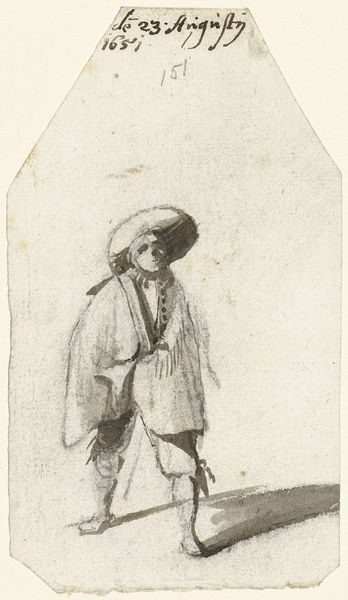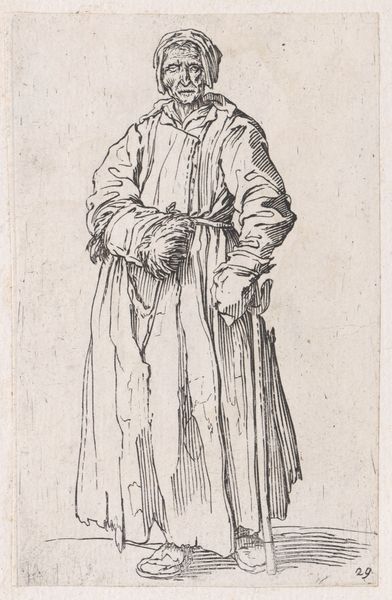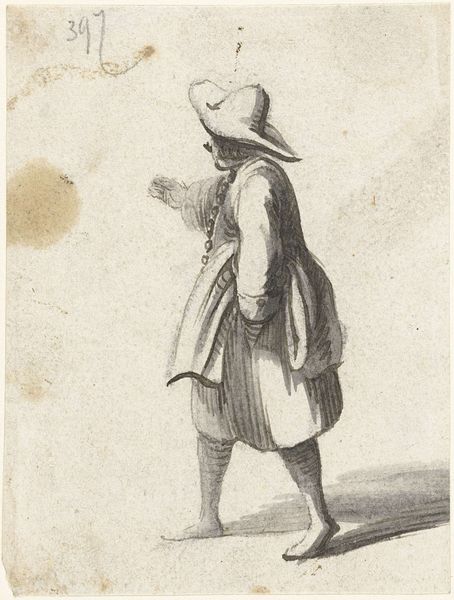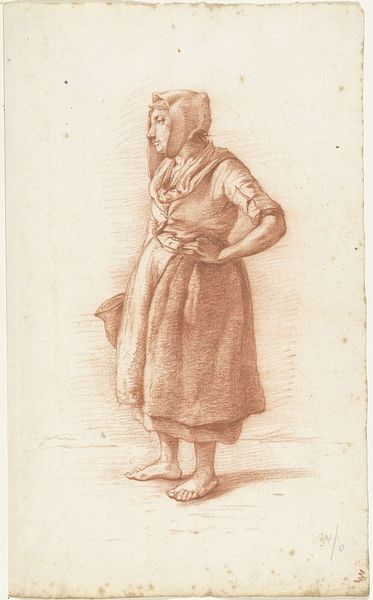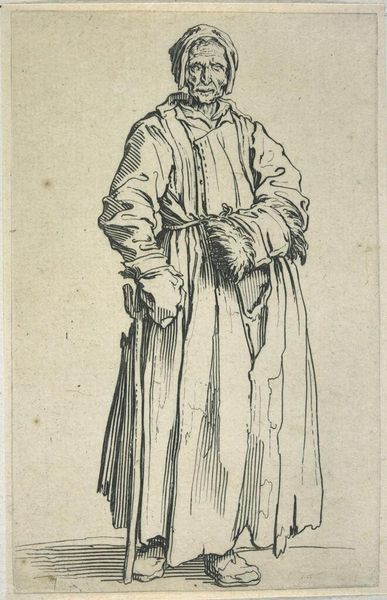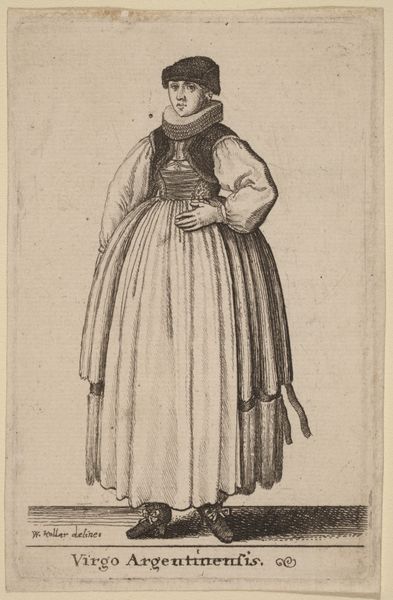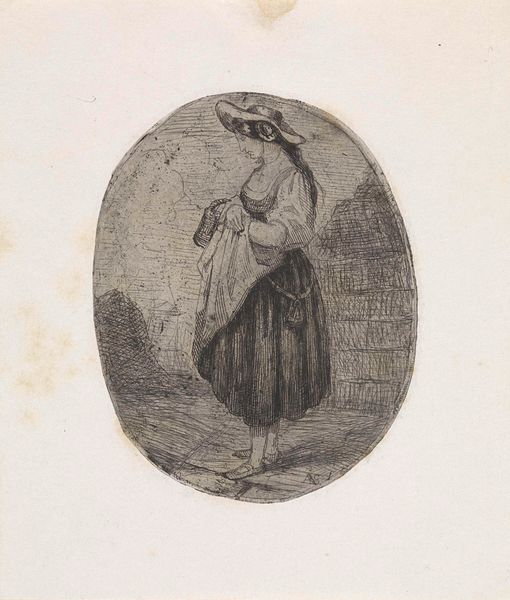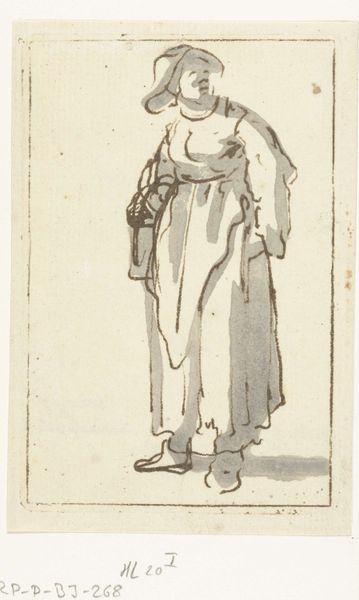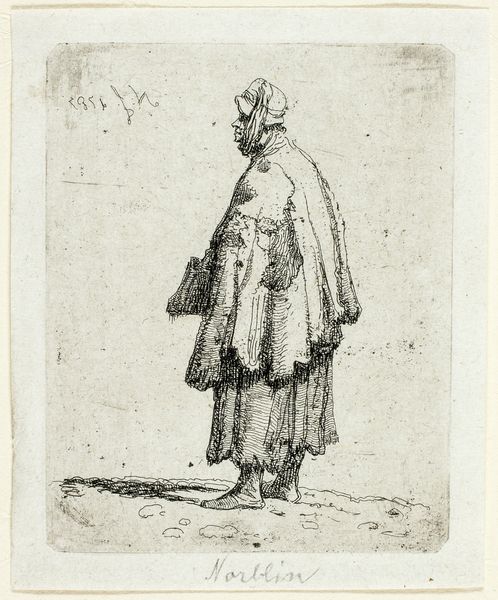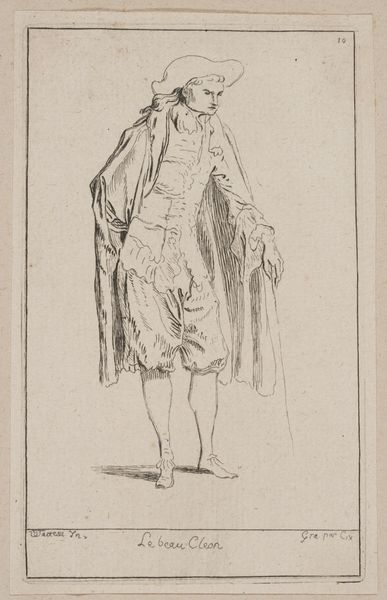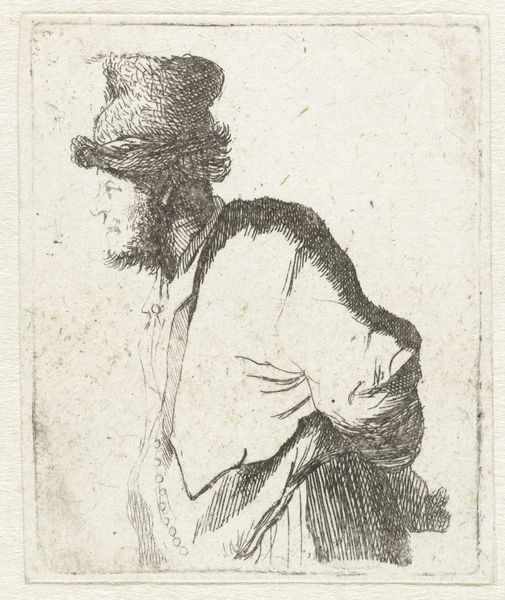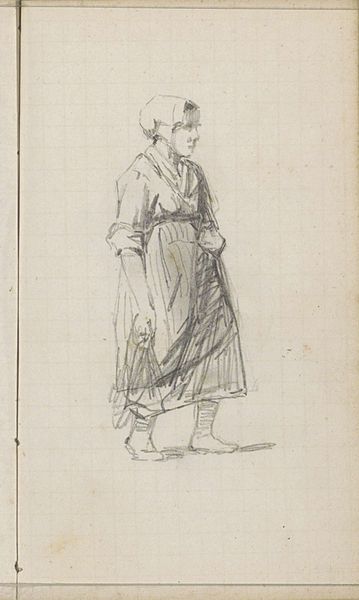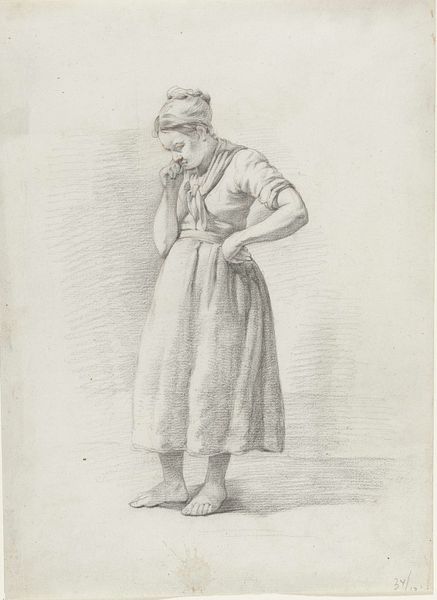
drawing, paper, graphite
#
portrait
#
pencil drawn
#
drawing
#
pencil sketch
#
charcoal drawing
#
paper
#
pencil drawing
#
graphite
#
genre-painting
#
graphite
#
realism
Dimensions: height 111 mm, width 93 mm
Copyright: Rijks Museum: Open Domain
Editor: So, this drawing, "Zwitserse Boerin," or Swiss Farmer's Wife, is by Arnoud Schaepkens, dating somewhere between 1855 and 1904. It's done in graphite and other drawing media on paper, I think? There’s a softness to the image that I find quite calming, despite her seemingly serious expression. What strikes you about this piece? Curator: The material process is quite interesting here. It's a drawing, yes, but what kind of paper? Its texture, its source…was it locally sourced, reflecting Schaepkens' immediate surroundings? Or was it a mass-produced sheet, speaking to broader industrial changes and material availability of the period? Editor: That's something I hadn't even considered. I just saw "drawing on paper," but you’re right, the materiality says so much about access and artistic intention. Curator: Exactly. Then look at the graphite itself. Was it finely milled? What was the process of its creation? These details impact the line quality, the shading, the overall effect. The "calming" effect you mentioned, could that be partly attributed to the material limitations or affordances Schaepkens faced? And how does that affect its reception? Is it "art," or something closer to craft given its accessible and available materials? Editor: So, by examining the physical materials, we can start to understand not just the image but the socioeconomic factors at play in its creation. How does her clothing, part of this material context, influence your read? Curator: Well, consider how the very *making* of clothing, the labour involved, contrasts with the art object itself. What was *her* labor and did it enable Schaepken's? Does this drawing elevate or objectify her, and how is that embedded within the very materials and processes that brought this image into being? Editor: I see what you mean. Looking at art this way completely changes the story being told. It is more than an image, and more about labor relations that produce images in the first place. Curator: Precisely. It reminds us that art is not born in a vacuum, but within specific conditions of production and consumption.
Comments
No comments
Be the first to comment and join the conversation on the ultimate creative platform.
